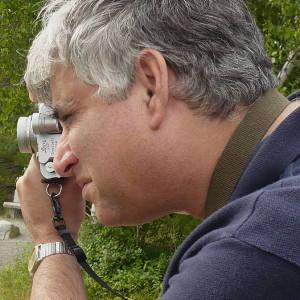Where It All Began. Leitz Elmarit 90mm
Back in 1974, I happened upon this book sitting on the shelf of a store in Cape Town, South Africa. That cover photograph is so entrancing, that I immediately picked it up and began browsing through the pages. At home, I mentioned the book to my parents, with a view to their funding its purchase... It would have been a special order from the UK, and probably fairly pricey. Quite typically, my Dad suggested that we request a copy from the central library in the City, and see if it was really worth it - a sort of cooling-off period, and making the eventual acquisition that much more precious. At least, this is how I've come to understand it; not such a bad thing to engender appreciation... After some weeks, the library informed us that the volume had arrived on inter-branch loan. To my mind, there was no doubt about the matter. But it was really decided when I caught Dad sneaking a surreptitious peek through the wonderful images and descriptions in its pages. He had spent time as a boy in the arid Karoo – South Africa’s vast, semi-desert interior – and I could tell that the nostalgia the book was evoking in him was too strong to resist. An order through the bookseller was duly placed; the date inscribed in my adolescent handwriting on the front end-paper tells me that the book arrived on the 21st of May, 1974.
It isn’t an exaggeration to say that Steam On The Veld gave me a lifetime love of railways, steam locomotives, South Africa’s vast vistas, and the romance contained in all of that. The book endeavors to present a snapshot of the engine classes still active in South Africa in the late 1960s, the end of the steam era, as more and more of their territory was usurped by diesel and electric traction. It begins with a detailed description of each class of locomotive still in service in 1968. Following is a chapter, with an introduction and a map, devoted to each one of South Africa's then four provinces, and a selection of photographs from each of the authors.
The three authors are: A E (Dusty) Durrant, who has written about and photographed steam locomotives all over the world. Alan Jorgensen is an American photographer, drawn to South Africa’s fantastic natural beauty, and then intoxicated by the steam. And Charlie Lewis, a civil engineer who worked for the South African Railways. His professional duties and title gave him unfettered access to the entire railway system. He spent decades documenting the steam locomotives, and brought a particular genius to the task, carefully choosing locales of exquisite beauty in the countryside, and then “allowing” the engines and their trains to traverse the scene, as if by chance. I have the most profound respect for his work. To add to the several books which Charlie has authored, his Magnum Opus, in collaboration with Les Pivnic and others, is really the website, Soul of a Railway, an extremely comprehensive history of South Africa’s once-glorious railway heritage.
A final note on the book’s cover photograph: it was taken in about 1968 in Bloemfontein, South Africa’s vast railway crossroads. At that time, it was 100% steam-worked. Charlie was based there at the time, and was able to gain access to this spot in the railway precinct, and thus he captured the simultaneous departure of two mainline trains from the station. A picture certainly is worth a thousand words.

Comments
Sign in or get an account to comment.


